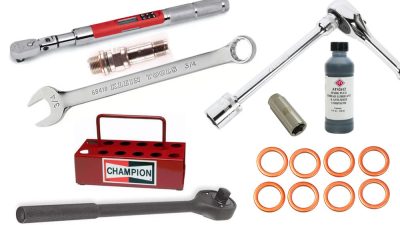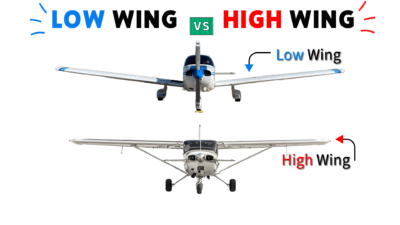Have you ever wondered what happens to the value of an aircraft after it has been damaged and repaired? Even if the repairs are flawless, the aircraft may still be worth less than before. This decrease in value is known as diminution of value, and it’s an essential concept for aircraft owners, buyers, and insurers to understand.
What Is Diminution of Value?
Diminution of value refers to the reduction in an aircraft’s market value due to its damage history, even after it has been fully repaired.
Imagine two identical aircraft side by side—one with a damage history and one without. Most buyers would prefer the undamaged aircraft and would likely pay more for it. This perceived loss of value for the repaired aircraft is its diminution of value.
When Does Diminution of Value Matter?
Diminution of value is significant in several scenarios:
- Selling an aircraft: Buyers often offer less for aircraft with a damage history.
- After an accident: Even when insurance covers repairs, the aircraft’s overall value may still decrease.
- Insurance claims: Some insurance policies cover diminution of value, but others do not.
Examples of Diminution of Value
1. Minor Damage
A small private aircraft sustains a dent in its wing from a ground handling accident. Although the dent is perfectly repaired, the aircraft’s value might drop by a few thousand dollars because it now has damage history.
2. Major Damage
A corporate jet suffers a hard landing, damaging the landing gear and fuselage. Even after $500,000 in repairs, the aircraft’s value might be reduced by millions due to the severity of the incident.
How Diminution of Value Is Handled: First-Party vs. Third-Party Liability Claims
Diminution of value is treated differently depending on whether it’s part of a first-party claim or a third-party liability claim:
First-Party Claims
These are claims made against your own insurance policy. Unfortunately, most aviation insurance policies exclude coverage for diminution of value in first-party claims. The insurer will pay for repairs but not for the loss in value.
Third-Party Liability Claims
When someone else causes damage to your aircraft, you may file a claim against their insurance policy for both repair costs and diminution of value. For example:
FBO-Caused Damage
If an FBO (Fixed Base Operator) damages your aircraft during servicing or ground handling, you can often file a liability claim against the FBO’s insurance company.
- No Contract Between Parties? No Problem. Even if there’s no specific contract between you and the FBO, their general liability insurance typically covers damages caused by their negligence. This can include diminution of value.
- Filing a Claim:
- Document the damage thoroughly with photographs and maintenance reports.
- Obtain a repair estimate and hire an expert appraiser to assess the diminution of value.
- Present the claim to the FBO’s insurance company, including all supporting documentation for both the repair costs and the lost value of your aircraft.
- Example: Imagine your business jet suffers significant damage to its fuselage when an FBO’s ground service vehicle accidentally collides with it during fueling. Although the repairs restore the jet to airworthy condition, the incident results in a documented damage history involving structural components. This history could deter potential buyers or lower their willingness to pay full market value for the jet. In this case, you can pursue a diminution of value claim in addition to the repair costs.
Other Examples of Third-Party Damage
- Collision with another aircraft on the ramp: You can file a liability claim against the other aircraft’s operator or their insurer.
- Damage from a hangar collapse: If the hangar was owned by an FBO or another party, their insurance should cover the damage and diminution of value.
Factors Affecting Diminution of Value
Several factors influence how much value an aircraft loses after damage:
- Type and extent of damage (e.g., structural vs. cosmetic)
- Quality of repairs
- Who performed the repairs (e.g., the manufacturer vs. a third-party repair station)
- Time since the damage occurred
- Repair documentation (detailed records can help reduce value loss)
- Current market conditions for that type of aircraft
Calculating Diminution of Value
Determining diminution of value is complex and requires expert appraisal. Here’s what goes into the calculation:
- Extent of damage: Structural damage typically has a greater impact than cosmetic damage.
- Repair quality: High-quality repairs, especially by the manufacturer or certified repair facilities, can mitigate value loss.
- Age of the aircraft: Newer aircraft usually experience a greater reduction in value from damage than older ones.
- Market conditions: High demand for a specific model can soften the impact of a damage history.
- Aircraft use: Aircraft used for commercial purposes may lose more value because of stricter safety and operational requirements.
An experienced aircraft appraiser evaluates these and other factors to determine how much less the damaged and repaired aircraft would sell for compared to one with no damage history.
How the Type of Aircraft Affects Diminution of Value
The type of aircraft plays a significant role in how much its value diminishes after damage:
- Expensive vs. Affordable Aircraft
High-value aircraft, such as business jets, often lose more value than smaller, less expensive planes. Buyers of premium aircraft tend to have stricter expectations. - Rare or Popular Models
Rare or highly sought-after models may retain more value despite a damage history due to demand. - New vs. Old Aircraft
Newer aircraft typically experience greater value loss from damage, while the impact diminishes as the aircraft ages. - Usage Type
- Commercial aircraft: Often lose significant value due to strict safety regulations and passenger perception.
- Private jets: Corporate buyers are often discerning, leading to higher value reductions.
- Cargo aircraft: May lose less value since performance matters more than aesthetics.
- Manufacturer Support
Aircraft supported by strong manufacturer backing may retain more value, as buyers trust repairs completed with OEM (Original Equipment Manufacturer) oversight.
Why Understanding Diminution of Value Matters
For aircraft owners, knowing about diminution of value can help you:
- Make informed decisions about insurance coverage.
- Evaluate whether to file a claim for minor damage.
- Plan effectively when selling your aircraft.
For buyers, understanding diminution of value enables you to:
- Negotiate better deals on aircraft with damage histories.
- Weigh your options when choosing between comparable aircraft.
Conclusion
Diminution of value is an important consideration for anyone involved in the ownership, operation, or purchase of aircraft. Whether you’re dealing with damage caused by an FBO, another party, or an accident, consulting aviation professionals such as appraisers and insurance experts ensures the best outcomes. By understanding how diminution of value works, you can protect your investment and make more informed decisions.




